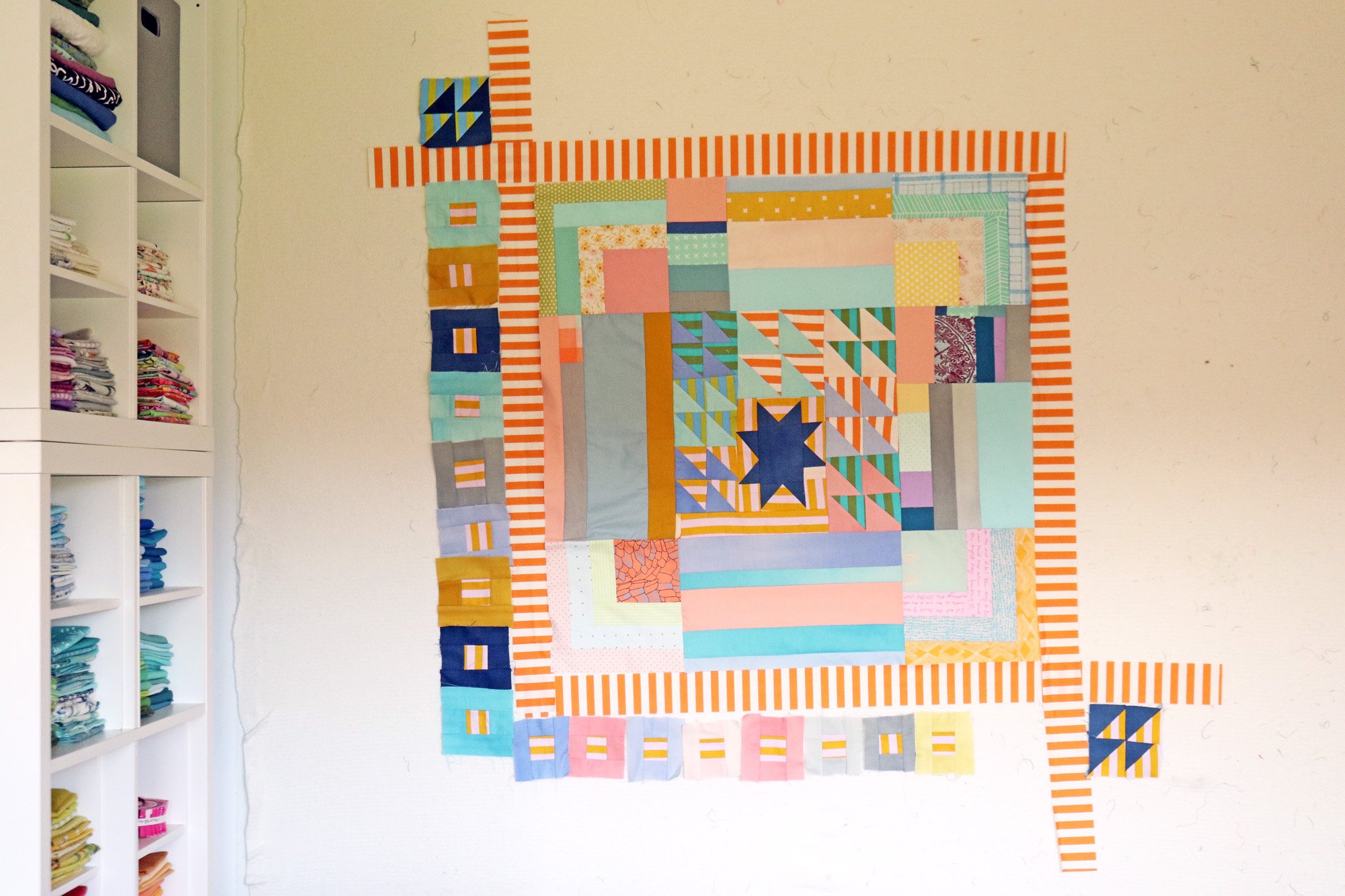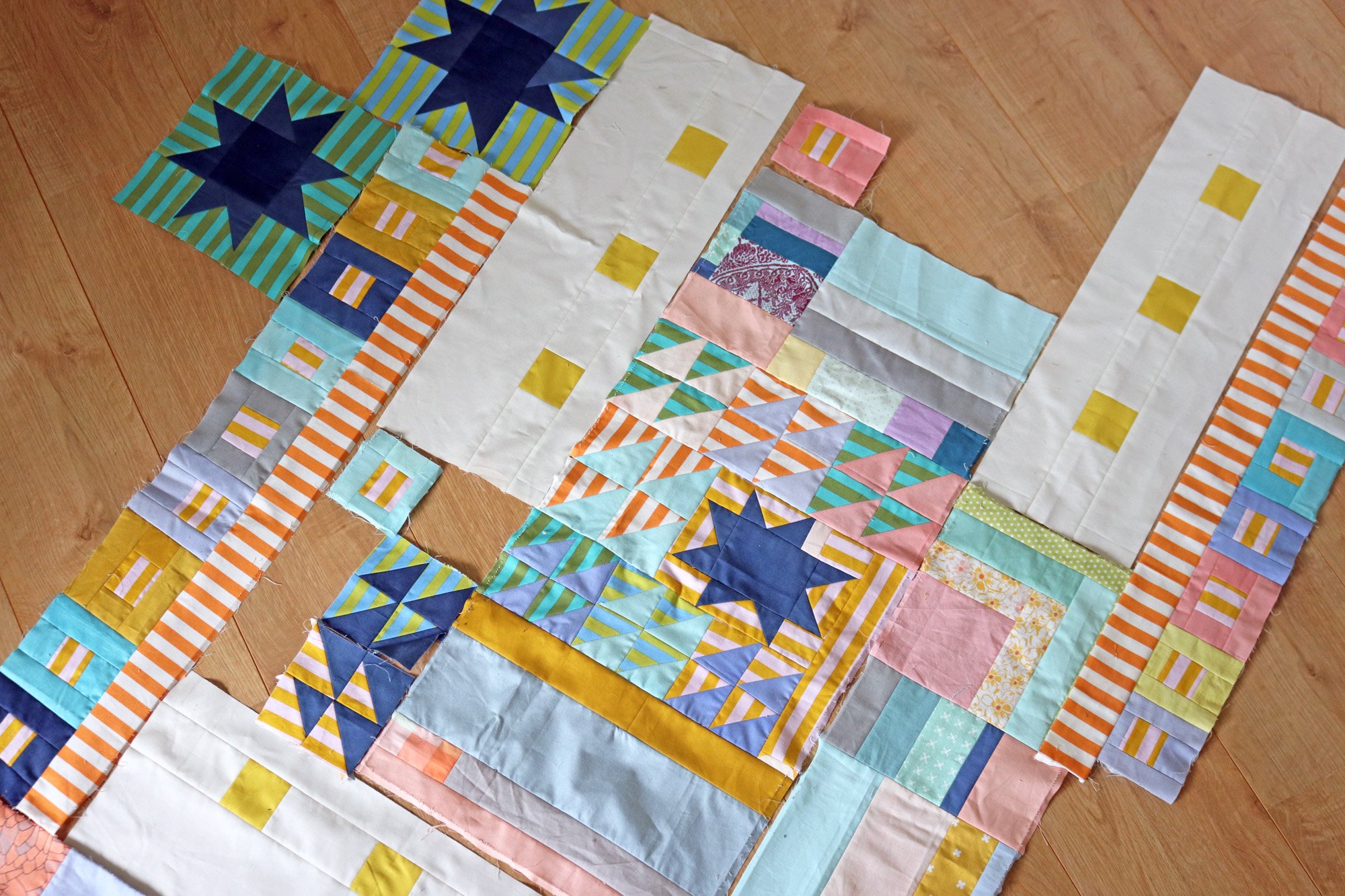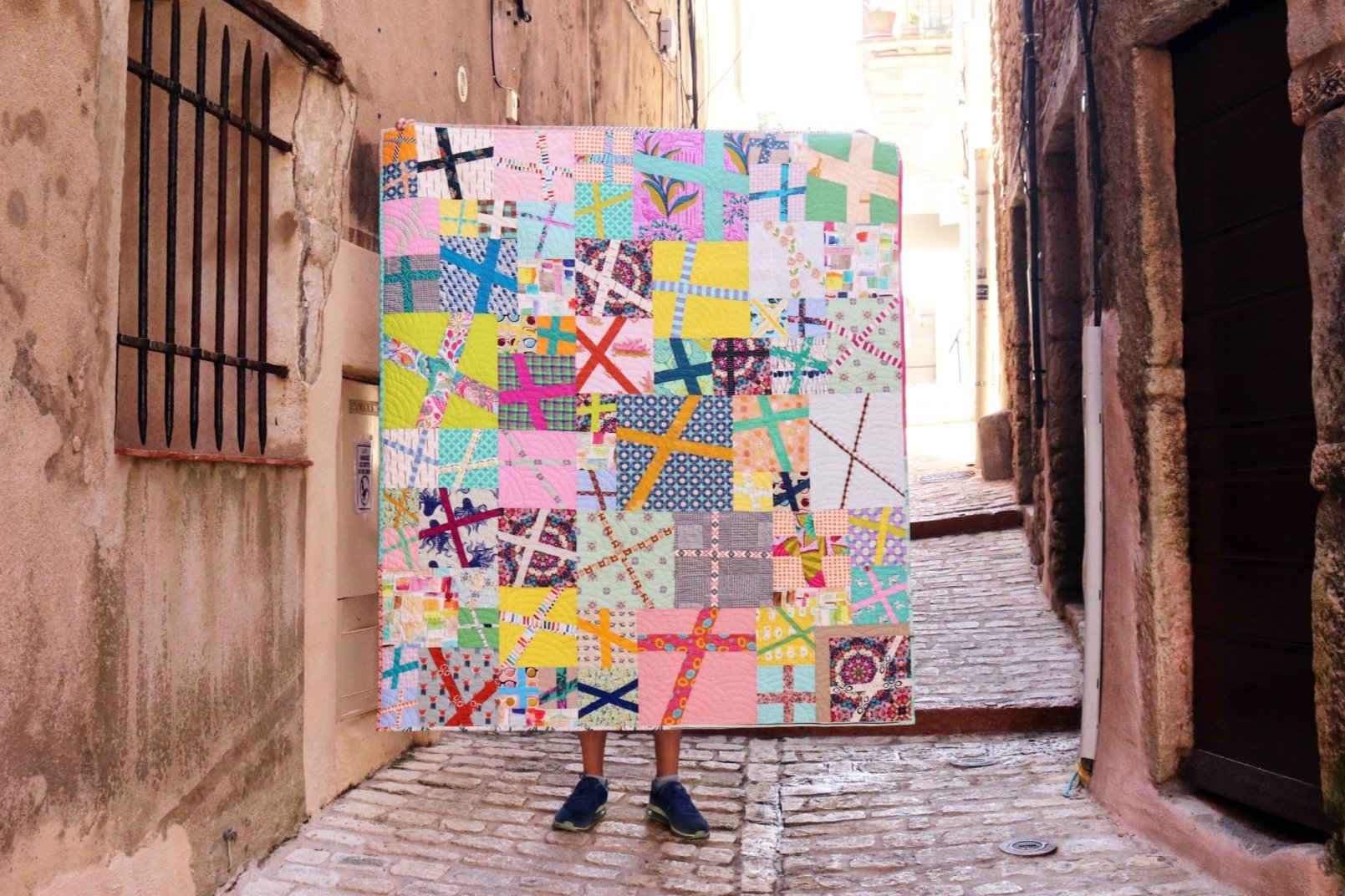Pastelly patchwork play
Four years ago I transplanted my family from America to The Netherlands. My first new quilt on these shores was an improv patchwork, using a set of ombre solids and Tula Pink Tent Stripes. I thought that improv would be a helpful way to work out my feelings during our months-long, uncertain immigration experience. But, it didn’t work out that way.
“Cutting and sewing ruler-free just doesn’t feel good right now. Perhaps it’s because my life has been a bit freeform for much too long. I miss strong rhythms that work for us to shape and support our days.”
So, I allowed myself to put away the playful pieces I’d created and comfort myself with a more orderly project.
Then at the end of 2021, I felt the urge to pull it out again. I sewed my existing improv blocks into a square-ish center cluster, then added a few orphan blocks as frame. On my design wall I imagined a medallion quilt, where new layers would be added as borders around the center.
The result wasn’t fabulous, but it felt like progress. And I do think that working on something is progress, even if you end up taking it all back at some point. Going in the wrong direction helps you find the right one.
The first time that my boyfriend Floris visited my sewing room, he appreciated that pastel cluster of wonky patchwork. At the time I was considering abandoning the project, but his attention sparked something. Now, several months later, I have room in my head and in my creative schedule for messing around a bit. Yesterday, I invited Floris to join me in the creative process.
Phase 1: Take apart that medallion. That medallion concept with its clear center was actually a wrong turn. The quilt should be more free-form. I separated multiple border layers from the center to create separate pieces that could be rearranged more freely.
Phase 2: Create more star blocks. After studying my pieces, I realized that the dark blue wonky star was my favorite aspect of the quilt. (That’s funny since when I originally made it I wondered if it was too ugly to use.) Thus, I sewed a few more ruler-free stars.
Phase 3: Add white. I found a white orphan block with yellow floating squares. Once sliced into three sections, the whiteness of this addition did a lot for my work-in-progress. It creates visual space and infuses a light feeling. This is what I had so far, before Floris arrived.
Phase 4: The juggle. I invited Floris to use my design wall to arrange and rearrange the elements into a pleasing composition. While he played, I made a few more blocks and cut up chunks of color to add to our project.
Floris was not quick to commit to any one arrangement. He took his time and embraced the process, where change is at times incremental and at other times radical. I was tuned into the star blocks, wanting to see them dispersed nicely in terms of placement, color and value. Floris’ awareness seemed more tuned to the visual and horizontal design lines, as created via the patchwork stripes and the long white blocks with yellow squares.
It was perfectly delightful to co-create with him, though also stretching. There was a point when I wanted to nail the stars in my “just right” position on the design wall so that no one (Floris) could move them again. Wink. Sharing your playthings takes emotional maturity, just like when we were kids.
An hour and half later, here is what we had created together. Yay! I am VERY happy with it! The best thing is that this quilt went from feeling lost to feeling real. I know that I will finish it now. And, you know, I can see that it will become something that captures the light and wonky feelings of our immigration experience after all. The hope, the surprises, the wrong turns. And now, four years later, the absolute serendipity of landing in this place and with this man.
He makes me feel quite pastelly.



































